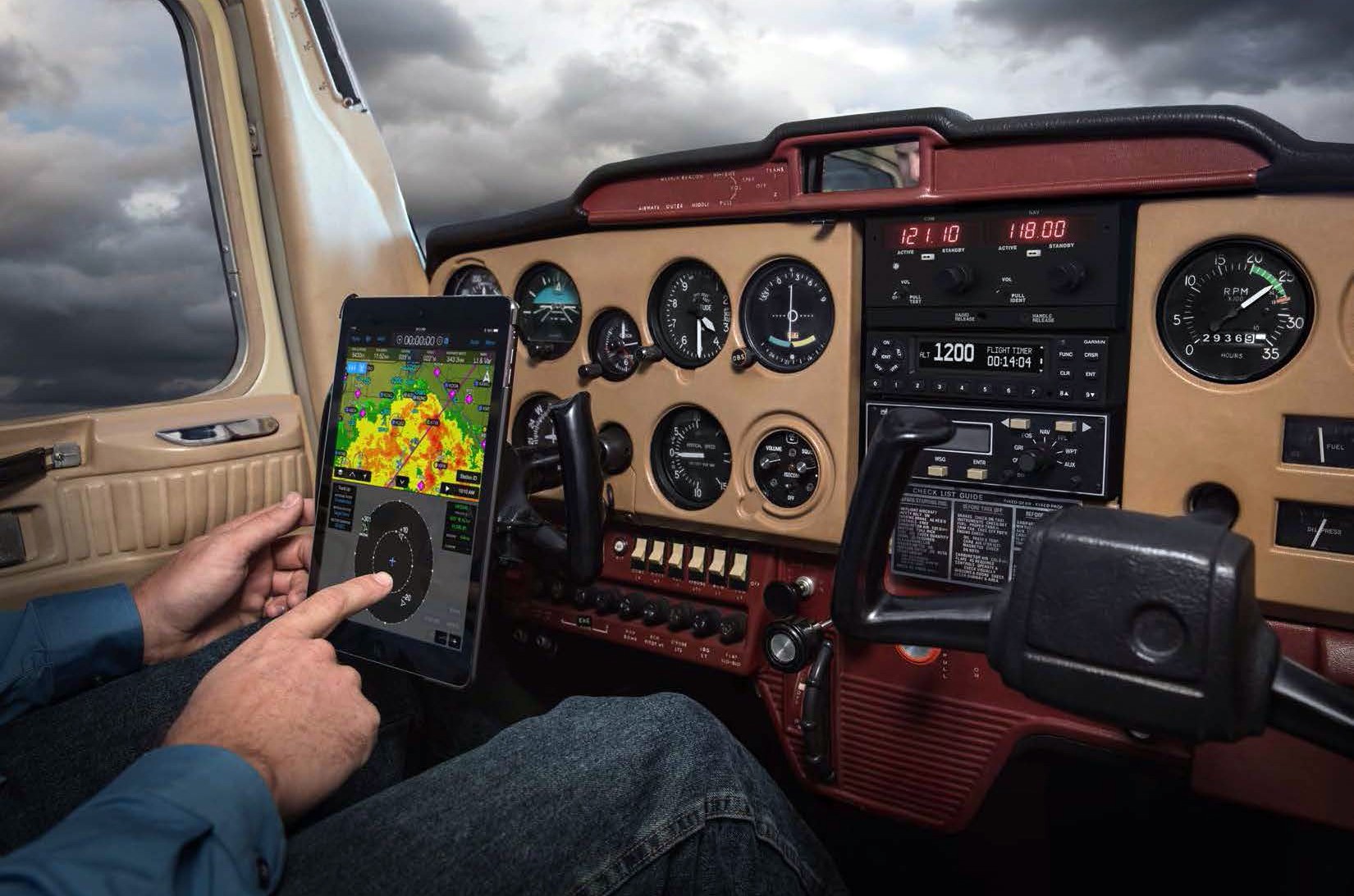2020 Vision
Civil Air Patrol Fleet Readies for ADS-B Technology Deadline
By Sheila Pursglove
Contributing Writer
Since 2010, the Federal Aviation Administration has been transitioning away from ground radar and navigational aids to precise tracking using satellite signal technology. This step-up in avionics safety carries a Jan. 1, 2020, deadline for all airplanes that operate in designated airspace to be equipped with the new system.
Gary Schneider, Civil Air Patrol’s director of logistics, is staying well ahead of the curve. Because of the airports CAP must be capable of operating from and the types of missions performed, all of CAP’s large fleet of single-engine planes must be configured for ADS-B (Automatic Dependent Surveillance-Broadcast) Out when the New Year dawns in three years. 
“My concern is that a number of general aviation aircraft owners are holding off on installing ADS-B, hoping the FAA will extend the deadline,” Schneider said. “I don’t want to be standing in line in December 2019 and competing with them for equipment and availability of avionics technicians and shops.”
ADS-B — touted by the FAA as environmentally friendly technology that enhances safety and efficiency and directly benefits pilots, controllers, airports, airlines and the public — is the foundation for NextGen surveillance.
Beginning in 2015, all new aircraft came from the factory with ADS-B Out installed, allowing an aircraft to broadcast its position and other information.
While the 2020 deadline does not require ADS-B In, aircraft equipped with that system gain additional benefits,
receiving broadcasts and messages from the ground network such as Traffic Information Service–Broadcast (TIS−B) and Flight Information Service–Broadcast (FIS-B).
“ADS-B, simply stated, is a very precise satellite-based system that uses GPS information coupled with data
from ground stations to determine the exact location, airspeed and other aircraft data and transmits that data
to a network of ground stations,” Schneider said. “These ground stations process this data and relay it to air
traffic control and nearby aircraft equipped with ADS-B In.”
Under the new rule, ADS-B Out performance will be required to operate in Class A, B and C airspace; Class E airspace within the 48 contiguous states and the District of Columbia at and above 10,000 feet MSL, excluding the airspace at and below 2,500 feet above the surface; and Class E airspace at and above 3,000 feet MSL over the Gulf of Mexico from the U.S. coastline out to 12 nautical miles.
By early February of this year, around 70 of CAP’s 560 aircraft across the country were equipped with ADS-B Out and a small number were equipped with both ADS-B Out and In.
“ADS-B itself requires little or no additional training for our aircrews,” Schneider said. “The transponder performs very much like transponders pilots are accustomed to using. The ADS-B functions are handled by onboard equipment and require nothing more than to be turned on.”
Schneider noted that CAP aircrews like the features, especially the In function that improves situational awareness and provides real-time weather and traffic information. “This is where we see the true benefits,” he said.
“An aircraft equipped with ADS-B In and Out will receive air-to-air traffic from aircraft near their location that are equipped with ADS-B as well as traffic information transmitted from the ground. Everything within +/13,500 feet and within a 15-nautical miles-radius will be displayed on their screens.”
The estimated cost of a complete ADS-B In and Out system is approximately $7,000 per aircraft. “We’vesecured funding from aircraft sales and other sources to get the program going,” Schneider said. “We’re currently in contact with avionics shops and are making arrangements to get our aircraft scheduled in for installations as quickly as possible.”
According to the FAA, with ADS-B In pilots can now see what controllers see: displays showing other aircraft in the sky. Cockpit displays also pinpoint hazardous weather and terrain and give pilots important flight information, such as temporary flight restrictions. The new system reduces the risk of runway incursions with cockpit and controller displays that show the location of aircraft and equipped ground vehicles on airport surfaces — even at night or during heavy rainfall.
ADS-B applications being developed now will give pilots indications or alerts of potential collisions. ADS-B also provides greater coverage because ground stations are so much easier to place than radar. Remote areas without radar coverage, like the Gulf of Mexico and parts of Alaska, now have surveillance with ADS-B. Relying on satellites also means aircraft will be able to fly more directly from one point to another, saving time and money and reducing fuel burn and emissions.
“The true benefits of ADS-B from a pilot’s perspective are improved situational awareness and a level of aviation safety and efficiency that we have not seen to this point,” Schneider said. “While it is rarely mentioned, ADS-B will actually enhance CAP’s lifesaving search and rescue capability as well.
“ADS-B systems transmit position information once every second, providing extremely accurate last reported positions to help narrow down the search area and ultimately reducing the time vital to a rescue operation.”


